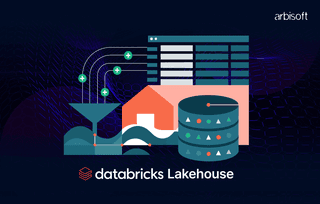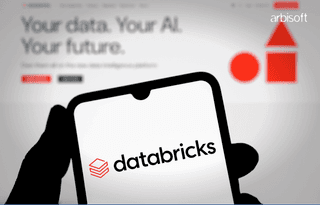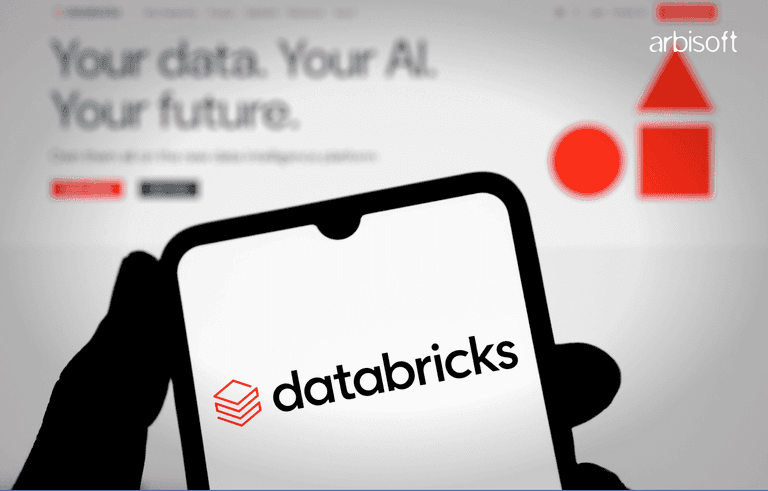We put excellence, value and quality above all - and it shows




A Technology Partnership That Goes Beyond Code

“Arbisoft has been my most trusted technology partner for now over 15 years. Arbisoft has very unique methods of recruiting and training, and the results demonstrate that. They have great teams, great positive attitudes and great communication.”
Federated Learning: The Future of Privacy-Preserving Machine Learning

In our hyper-connected world, we rely on smart devices every day; whether it's our smartphones predicting text, fitness apps tracking steps, or voice assistants learning our preferences. But with all this convenience comes a growing concern: privacy.
In fact, over 80% of internet users worry about how their data is being used. At the same time, machine learning solutions are revolutionizing industries, with the AI market set to grow to $209 billion by 2029. But how can we harness the power of AI without compromising personal data?
Enter Federated Learning (FL); an innovative approach that allows AI models to improve without ever pulling your raw data from your device. Imagine your phone getting smarter without your private information ever leaving your pocket! In this blog, we’ll dive into how FL works, its key benefits, and why it’s paving the way for privacy-first machine learning.
Download this guide to discover essential techniques to protect sensitive data while accessing AI systems.

Read this Beginner's Guide to Privacy-Preserving AI Techniques to discover how you can harness the power of AI while protecting individual privacy.

What is Federated Learning?
Federated Learning is a decentralized approach to machine learning that allows models to be trained across multiple devices (like smartphones, tablets, or computers) without moving the data from those devices. Instead of gathering all the data in a central server (as in traditional ML), federated learning brings the training process directly to where the data resides.
In simpler terms, think of it as teaching a class where every student (device) learns individually from their own materials (data), and then shares their knowledge (model updates) with the teacher (central server). The teacher gathers the insights, updates the overall understanding (global model), and sends it back to the students for further improvement; without ever taking the students' materials.

Now let’s take a deeper look at each step.
How Federated Learning Works: A Step-by-Step Breakdown
Federated Learning is a distributed machine learning process that enables model training across multiple devices without transferring raw data to a central server. Instead, it focuses on collaborative learning while ensuring privacy and reducing data transfer costs. Here’s how the federated learning process works in detail:
1. Initial Model Distribution
The process starts with a global model initialized and stored on a central server. This global model is then distributed to a large number of edge devices, such as smartphones, computers, or IoT devices. Each of these devices has access to its own local data; data generated by the users or the operations of the device.
For example, a smartphone’s predictive text system receives an initial language model from a central server, ready to be improved using local user data on the device.
2. Local Model Training on Devices
Each device uses its local data to train a copy of the global model locally. During this training process, the device adjusts the model’s parameters to improve its performance based on the patterns identified from the local data.
a. Techniques Used: The most common training technique in this step is stochastic gradient descent (SGD). This technique iteratively adjusts the model parameters by minimizing the error between the predicted and actual outputs for the data on the device.
Example: In the case of the predictive text system, the device trains the model based on the user’s typing habits, learning patterns like commonly used words or phrases, without ever transferring the raw text data to a central server.
3. Sending Model Updates (Instead of Raw Data)
Once the local training is complete, the device does not send the raw data back to the central server. Instead, it sends model updates, which are the changes in the model parameters that occurred during local training. These updates reflect how the model was optimized using the local data but contain no sensitive information.
Key Privacy Measures: To further protect privacy, many systems implement techniques such as:
a. Differential Privacy: Adds random noise to the model updates to ensure that even if someone tries to reverse-engineer the update, they won’t be able to identify sensitive details about the data.
b. Homomorphic Encryption: Encrypts the model updates before sending them, so even if the updates are intercepted, they remain unintelligible to attackers.
For instance, the predictive text system sends updated model weights (i.e., adjusted parameters) that reflect the device’s learning but don’t include any user-specific words or phrases.
4. Aggregation of Updates at the Server
When the central server receives model updates from multiple devices, it aggregates them to create an improved global model. The server applies Federated Averaging (FedAvg), which calculates a weighted average of the received model updates. The weight given to each update is often proportional to the amount of data the device used during training, ensuring that devices with more data have a more significant influence on the global model.
During this process, techniques like secure multi-party computation (SMPC) ensure that the server cannot see the individual model updates from each device. Instead, it only sees the final aggregated result.
For example, the server aggregates the model updates from thousands of smartphones to improve the predictive text model, making it more accurate based on the collective learning from many users while preserving their privacy.
5. Global Model Distribution
After the aggregation, the central server generates an updated global model that incorporates the knowledge from all participating devices. This updated global model is then sent back to all the devices, replacing their local models.
As an example, the newly improved predictive text model, which has learned from the typing patterns of many users, is now sent back to all the smartphones in the network. This enables each device to benefit from the collective training without sacrificing user privacy.
6. Iterative Training (Ongoing Cycles)
Federated learning is an iterative process, meaning the steps from local training to global aggregation are repeated across several rounds. With each round, the global model becomes more refined and accurate. Devices continue to generate new local data over time, and each new cycle incorporates fresh updates into the global model.
a. Client Participation: Not all devices participate in every round. Federated learning systems often use partial client participation, where only a subset of devices (e.g., 10-30%) are selected for each training round. This helps reduce the communication load and improves scalability.
For example, over time, the predictive text model improves after several rounds of training as new user typing patterns are learned and incorporated into the global model. Each cycle refines the model to be more responsive and accurate for users.
Additional Considerations in the Federated Learning Process
1. Communication Efficiency
Since federated learning involves sending model updates (often large amounts of data) back and forth, it can create a communication bottleneck. To address this, there are some solutions such as:
a. Sparse Updates: Devices only send updates for the most important parts of the model, reducing the size of the data transfer.
b. Compression: Updates can be compressed before being sent to the server, significantly lowering the communication load without compromising the quality of the updates.
2. Handling Device and Data Heterogeneity
Devices participating in federated learning can vary greatly in terms of computational power, connectivity, and the quantity/quality of data they generate. Federated learning systems need to be robust enough to handle:
a. Heterogeneous Data: Data on different devices may be skewed or imbalanced (e.g., some devices may have more or less data). The aggregation process needs to balance these discrepancies to avoid biasing the global model.
b. Device Failures: Some devices may drop out of the training process due to connectivity issues or hardware failures. Federated learning systems account for these failures and can still aggregate updates from the devices that remain active.
Federated learning is a robust and innovative approach to machine learning that balances privacy with model performance. By allowing models to be trained across distributed devices while keeping the data local, federated learning reduces the risk of privacy breaches, minimizes data transfer costs, and enables personalized model improvements without compromising user security. Through multiple iterations of local training and global aggregation, federated learning creates a continuously improving system that can adapt to new data while ensuring data sovereignty for users.
Why is Federated Learning Important?
Federated learning is gaining traction because it addresses several pressing concerns in the machine learning space, particularly around privacy, data security, and regulatory compliance.
1. Enhanced Privacy
Since raw data never leaves the device, federated learning minimizes the risk of data breaches or leaks. This is especially important for industries like healthcare, finance, and education, where sensitive data (like medical records or financial transactions) is involved. By keeping the data local, users' personal information remains protected, and companies are less likely to face regulatory penalties.
2. Compliance with Data Regulations
Laws like the General Data Protection Regulation (GDPR) and California Consumer Privacy Act (CCPA) put strict rules on how companies can collect and store user data. Federated learning provides a way to comply with these regulations since it keeps the data on users' devices and reduces the need for centralized data collection.
3. Reduced Data Transfer Costs
Centralizing large volumes of data can be costly and time-consuming. By training models on local devices, federated learning reduces the amount of data that needs to be transferred across networks, saving both bandwidth and resources.
4. Personalization Without Sacrificing Privacy
Federated learning also enables personalized machine learning models. For example, a language model on your smartphone can learn from your specific usage patterns and improve its accuracy without ever needing access to your personal data. This means you get a better user experience without compromising privacy.
Real-World Applications of Federated Learning
Federated learning is already making waves across several industries. Let’s explore a few examples:
1. Healthcare
In healthcare, federated learning enables the training of ML models on data from multiple hospitals without ever exposing sensitive patient information. For instance, hospitals can collaborate on building models to predict patient outcomes, while keeping patient records secure within their own systems.
2. Mobile Devices
Google has integrated federated learning into its Android platform, specifically in the Gboard keyboard. The system improves typing predictions and autocorrections by learning from users' typing habits without ever sending personal data to Google’s servers.
3. Finance
Financial institutions are using federated learning to detect fraud and predict risks by leveraging data from multiple banks or branches, all while ensuring that customer data is kept private.
4. Smart Homes
Federated learning is also being applied to smart home devices. By training models directly on individual devices like smart speakers or thermostats, companies can improve the functionality of these devices without storing sensitive household data in the cloud.
Challenges and Limitations
While federated learning holds great promise, it also comes with challenges, such as:
1. Communication Overhead: Sending model updates across many devices can lead to increased communication costs and delays, especially with devices that have limited connectivity.
2. Heterogeneous Data: Data stored on different devices may vary in quality, quantity, or format. Managing these inconsistencies is critical to ensure that the global model is reliable.
3. Security Risks: Although federated learning improves privacy, it is not immune to attacks, which is why integrating robust automation testing services is crucial to identify and mitigate potential vulnerabilities. For example, a malicious participant could attempt to manipulate the model updates. Researchers are exploring techniques like differential privacy and secure aggregation to address these vulnerabilities.
The Future of Federated Learning
Federated learning is a rapidly evolving field, and advancements are continuously being made to improve its efficiency and security, often supported by specialized software development services that drive robust implementations. As more organizations prioritize data privacy and comply with strict regulations, federated learning will likely become a critical component of machine learning frameworks.
Emerging innovations like federated learning 2.0 are being explored to optimize communication between devices and enhance security through methods like homomorphic encryption. Furthermore, as the Internet of Things (IoT) continues to grow, federated learning will play a crucial role in enabling smart, interconnected devices to learn from data without compromising privacy.
In a Nutshell
Federated learning presents a revolutionary approach to building machine learning models while prioritizing user privacy. Its ability to train on decentralized data, minimize the risk of data breaches, and reduce compliance challenges makes it a key player in the future of AI. Although there are some hurdles to overcome, the potential benefits are vast, with applications already emerging across industries like healthcare, finance, and mobile technology. As the world continues to become more data-driven, federated learning will ensure that privacy and performance go hand in hand.
























